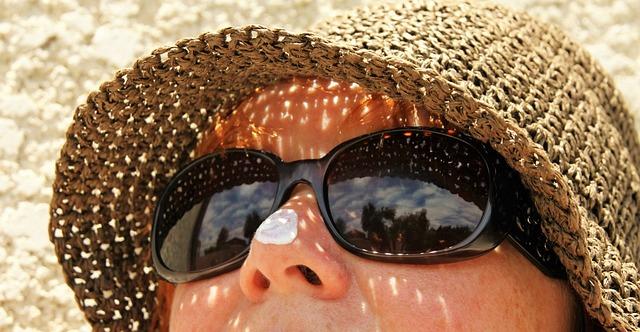Sunscreen is your best defense against sunburn, premature aging, and skin cancer. Here’s a comprehensive guide to ensure you get the most out of your sunscreen and keep your skin safe while enjoying the beach.
When it comes to spending a day at the beach, protecting your skin with sunscreen from the sun’s harmful rays is paramount.
1. Choose the Right Sunscreen
- Broad-Spectrum Protection: Ensure your sunscreen offers broad-spectrum protection, which shields your skin from both UVA and UVB rays.
- SPF 30 or Higher: Opt for a sunscreen with an SPF of at least 30. This level of protection blocks about 97% of UVB rays.
- Water-Resistant: Select a water-resistant formula to ensure it stays effective while you swim or sweat.
2. Apply Generously and Evenly
- Quantity Matters: Use at least one ounce (about a shot glass full) of sunscreen to cover your entire body.
- Don’t Miss Spots: Pay attention to commonly missed areas such as the ears, back of the neck, tops of the feet, and the back of the hands.
- Face First: Use a sunscreen specifically formulated for the face to avoid irritation, especially if you have sensitive skin.
3. Timing is Everything
- Pre-Beach Application: Apply sunscreen 15-30 minutes before heading out to the beach. This allows it to absorb into your skin and start working effectively.
- Reapply Regularly: Reapply every two hours, or immediately after swimming, sweating, or towel drying.
4. Layering for Maximum Protection
- Use Other Forms of Protection: Complement your sunscreen use with other protective measures like wearing a wide-brimmed hat, UV-protective clothing, and sunglasses.
- Shade and Timing: Seek shade, especially during peak sun intensity hours between 10 AM and 4 PM.
5. Special Considerations
- For Kids: Choose sunscreens formulated for children, which are typically less irritating. Ensure they are water-resistant and broad-spectrum.
- Sensitive Skin: Look for sunscreens with physical blockers like zinc oxide or titanium dioxide if you have sensitive skin. These are less likely to cause irritation.
- Don’t Forget Your Lips: Use a lip balm with SPF to protect your lips from UV damage.
6. Post-Beach Care
- Hydrate: Drink plenty of water to stay hydrated, as the sun can dehydrate your skin.
- Moisturize: After washing off the sunscreen, apply a moisturizer to keep your skin hydrated and help repair any damage.
7. Common Myths Debunked
- “I Don’t Need Sunscreen on Cloudy Days”: UV rays can penetrate clouds, so sunscreen is essential even on overcast days.
- “A Base Tan Protects Me”: A tan is a sign of skin damage. It does not protect against future UV exposure and can increase your risk of skin cancer.
By following these guidelines, you can enjoy your beach day with peace of mind, knowing you’re doing your best to protect your skin. Remember, consistent and correct sunscreen use is key to maintaining healthy skin and preventing long-term damage.
Stay safe and have fun at the beach!
As always, if you have any questions or concerns about your skin health or would like personalized advice, our team is here to help. Your skin deserves the best care, and we’re committed to helping you achieve that.
Feel free to ask Dr. Dupati more about how sunscreen can help in the fight against aging skin (and skin cancer prevention) at your next appointment!
Apollo Dermatology – Board Certified Dermatologist Office serving Auburn Hills, Lake Orion, Rochester Hills, Troy MI, and all of Southeast Michigan
OFFICE HOURS
Monday:
9 AM – 4:30 PM
Tuesday:
9 AM – 4:30 PM
Wednesday:
9 AM – 4:30 PM
Thursday:
9 AM – 4:30 PM
Friday, Saturday & Sunday:
Closed
ADDRESS:
Apollo Dermatology, Board Certifified Dermatologist in Rochester Hills
555 Barclay Circle
Suite 170
Rochester Hills, Michigan
48307
DIRECTIONS:
Apollo Dermatology – Board Certified Dermatologist Office serving Auburn Hills, Lake Orion, Rochester Hills, Troy MI, and all of Southeast Michigan
















